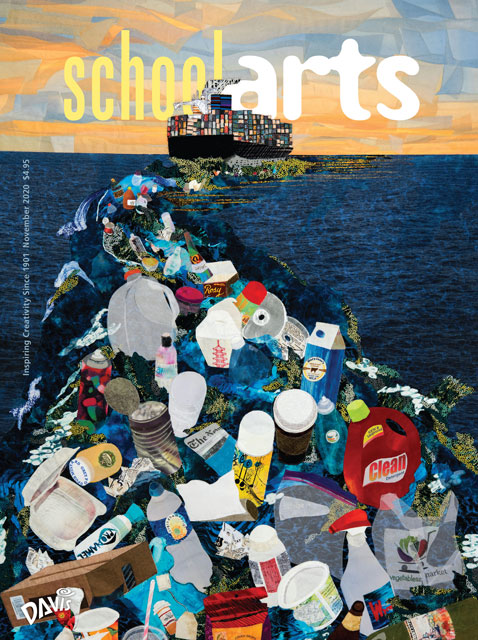 |
| Andy P., viruses, bacteria, and fragmenting plant cells. |
The unseen world of viruses, bacteria, pollen, insects, and cells are interesting, and maybe even a little creepy. Yet some may view this unseen world as beautiful. More recently, our world has experienced how these unseen objects have drastically changed our lives.
Art and Science Collaboration
As someone who appreciates the relationship between the sciences and visual art, I have always been intrigued by the structures one sees in the hidden world under the lens of a microscope. I was fortunate to partner with a fellow teacher at Jefferson Middle School who shares my love of those hidden worlds and the compositions they create. The lesson we developed not only motivated our students to be more engaged and motivated in studying visual art and science but also connected the two disciplines in a manner that produced a wonderful synergy with the lesson.
Investigating Hidden Worlds
Our students began the lesson in either their visual art or science class. Students in science class used microscopes to explore bacteria samples from a wilderness area near our school and identified organisms such as spirogyra and euglena.
In visual art class, students were introduced to terms such as color theory, composition, and the concepts of abstract art, realism, and nonobjective art. Students then created a piece of art that illustrated the unseen microscopic worlds using oil pastels and colored pencils, developing space through overlapping shapes and forms.
 |
.jpg) |
| Top: Julia S., a DNA strand floating in a microscopic world. Bottom: An effective example of the use of space and variety. |
Exploring Art Concepts From an art class perspective, as students used oil pastels and colored pencils, they learned important skills such as blending tertiary colors to create the illusions of 3D forms, such as red blood cells or bacteria, and overlapping DNA strands to create movement and space. Adding to this knowledge of the structure of an artwork, students also experienced a better understanding of concepts such as what differentiates an abstract piece from a nonobjective work of art. Although we drew from realistic organisms, the completed drawings had the more abstract characteristics of a Kandinsky, Klee, or Miró painting, where the most important qualities are the structure and feeling conveyed.
Beyond the Microscope
This lesson helps students understand how visual arts and sciences connect in an exciting and intriguing way. A lesson on how the microscopic world touches other parts of our lives has never been more relevant than it is now, during the COVID-19 pandemic. I bet there’s not a student in our country who isn’t familiar with the color, shape, and style of the coronavirus. Now more than ever, we are looking more closely at this hidden world.
Jim Dodson is an art teacher at Jefferson Middle School in Oak Ridge, Tennessee. jdodsonart@aol.com
NATIONAL STANDARD
Connecting: Relating artistic ideas and work with personal meaning and external context.
RESOURCE
Coronavirus Research: nature.com/collections/hajgidghjb
View this article in the digital edition.




.jpg)
